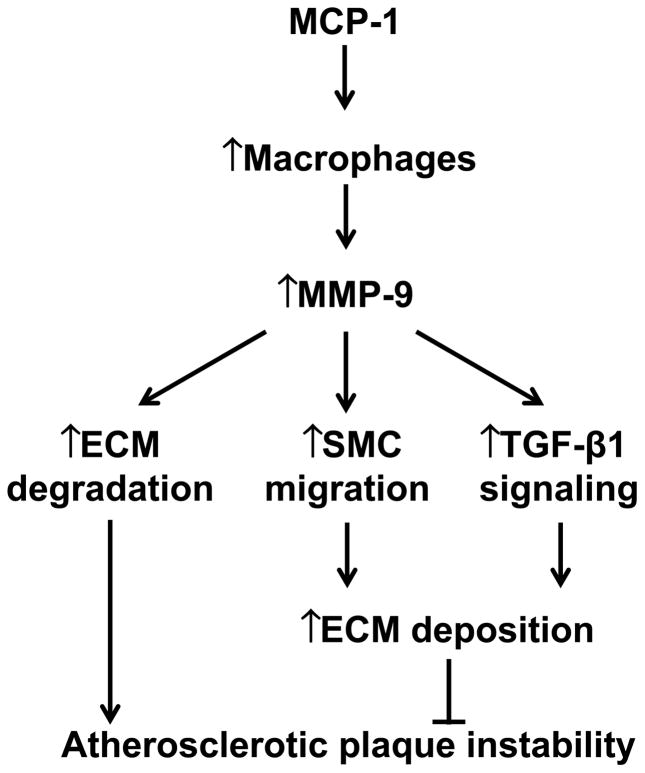Fig. 1.
A diagram of the mechanisms by which MCP-1 and MMP-9 regulate the development and progression of atherosclerosis. MCP-1 recruits monocytes to the site of atherosclerotic lesion, where they mature into macrophages. MMP-9, derived mainly from macrophages, exerts dual roles in regulating atherosclerosis. On the one hand, MMP-9 cleaves ECM substrates (especially collagen) in the fibrous cap to increase plaque vulnerability. On the other hand, MMP-9 stimulates smooth muscle cell (SMC) migration and transforming growth factor (TGF)-β1 signaling to facilitate ECM deposition. To what extent both effects occur in vivo remain to be elucidated.

